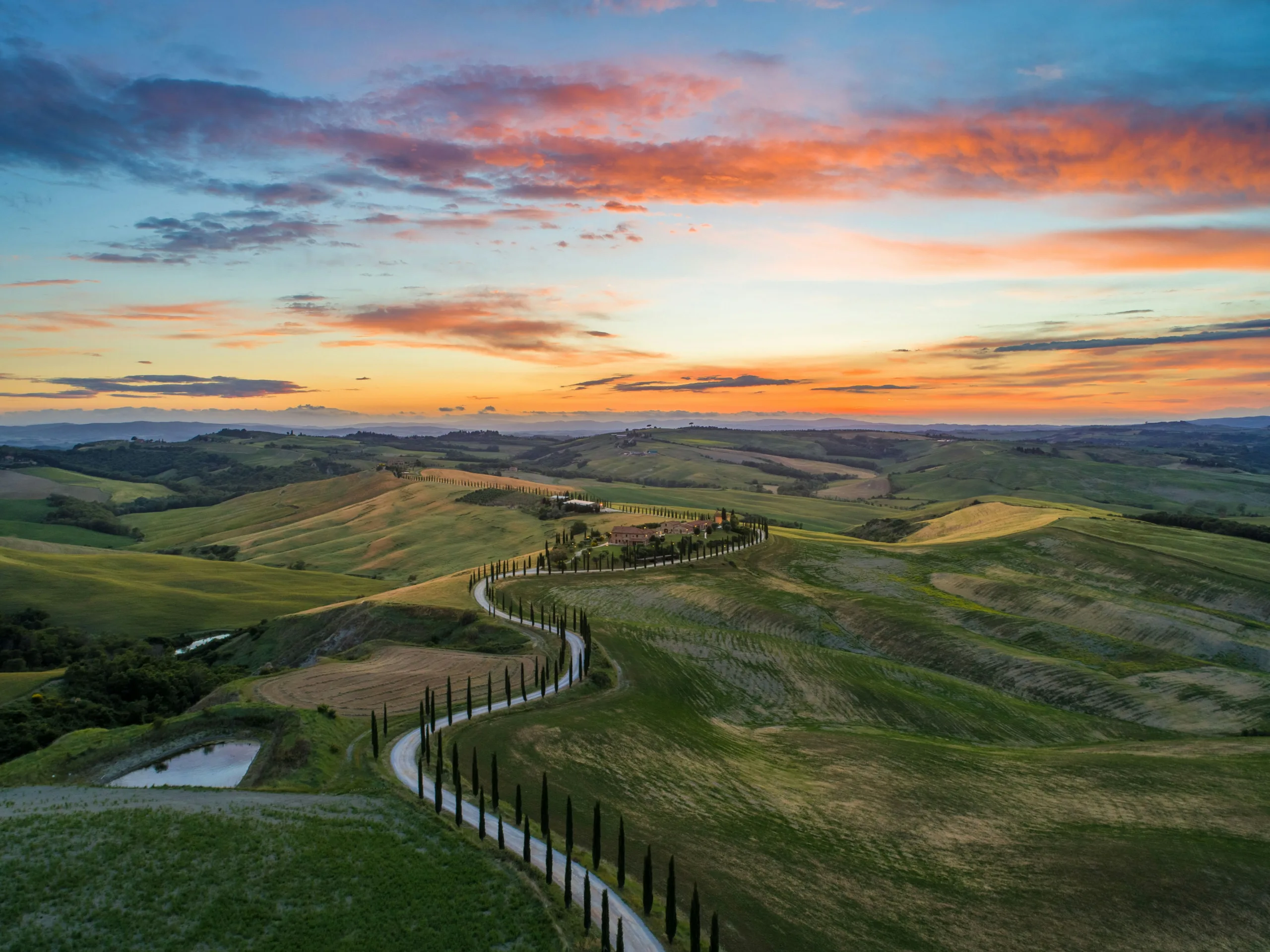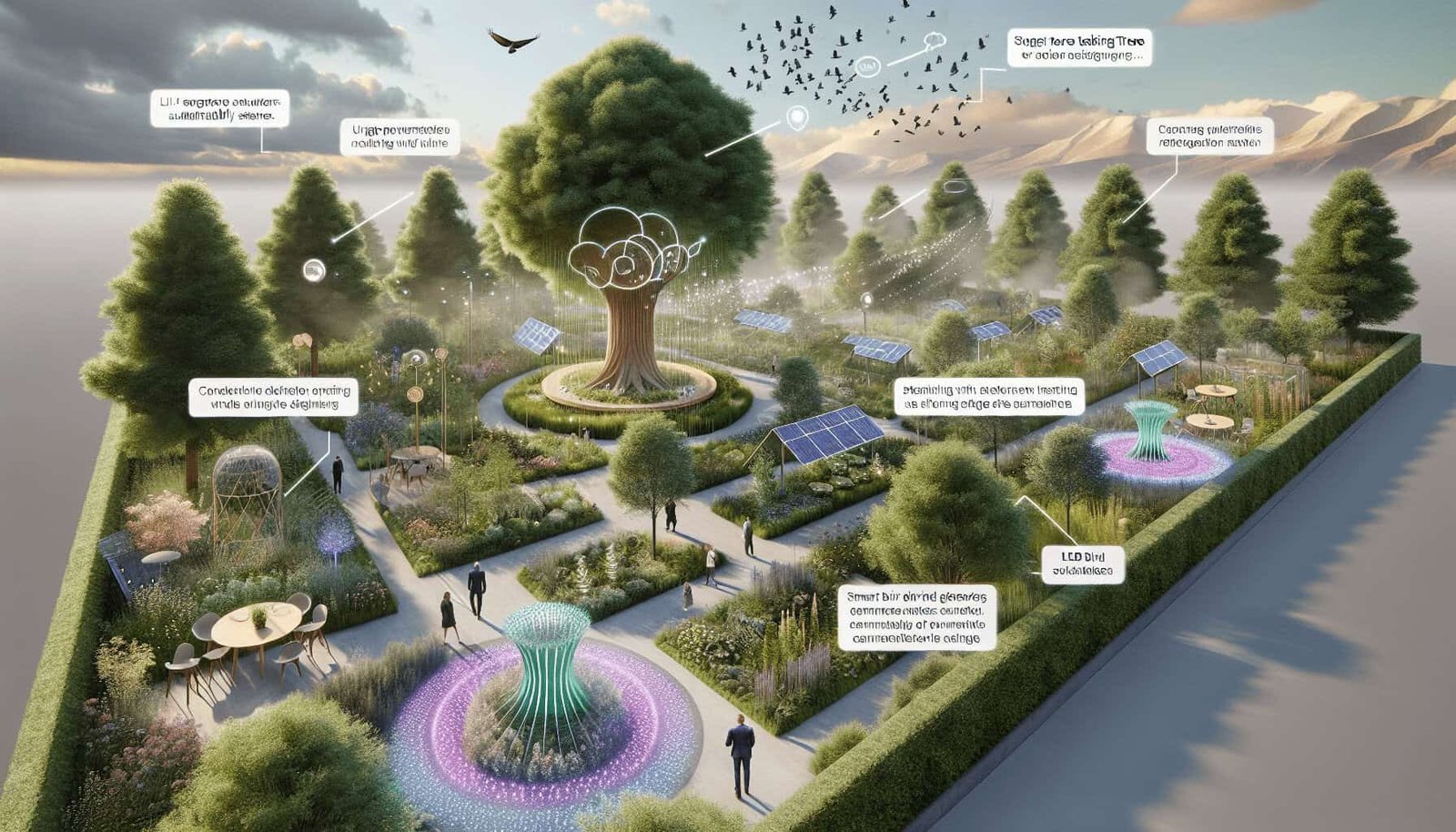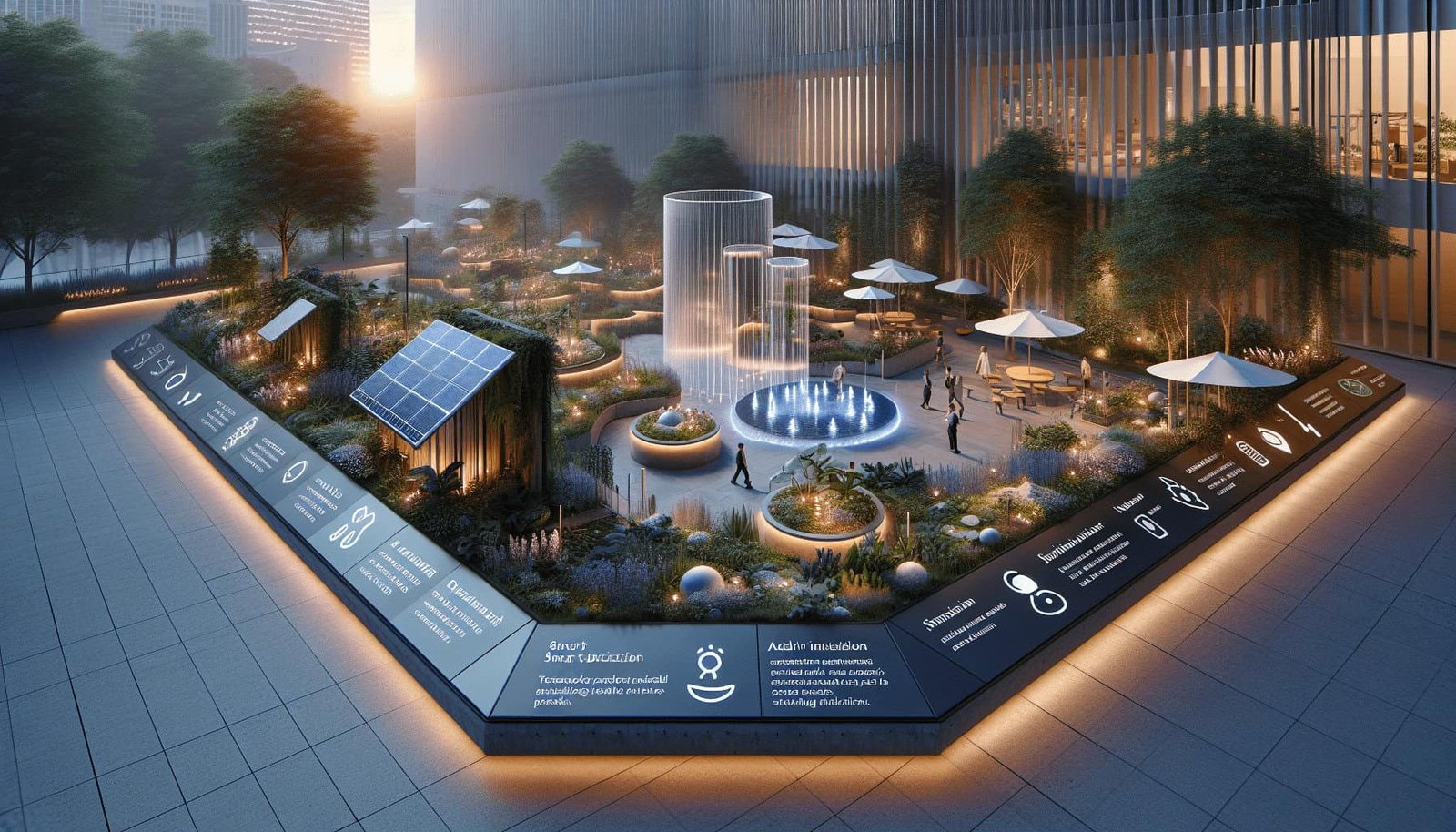Imagine having the ability to bring your dream garden to life with just a few clicks and swipes. With “Interactive Garden Design,” this dream can now become a reality. This innovative software allows you to effortlessly design and customize your perfect garden from the comfort of your own home. Whether you have a green thumb or are a complete gardening novice, this user-friendly tool guides you through the entire process, enabling you to visualize, create, and experiment with various plantings, layouts, and outdoor features. Say goodbye to hours of tedious planning and hello to a beautiful, personalized garden that reflects your unique style and preferences. Get ready to unleash your creativity and transform your outdoor space into a breathtaking oasis. Gardening is a wonderful way to connect with nature and create a beautiful outdoor space. However, traditional garden design can sometimes feel static and limited. That’s where interactive garden design comes in. By incorporating interactive elements into your garden, you can enhance your gardening experience and reap a host of benefits. In this article, we will explore the numerous advantages of interactive garden design, discuss the tools that can assist you in the process, provide a step-by-step guide to designing your interactive garden, explore different garden types and techniques for small spaces, delve into the integration of technology into interactive garden design, touch upon sustainability, offer maintenance tips, discuss common challenges, and provide inspiration and resources. So let’s dive in and discover the world of interactive garden design!
Benefits of Interactive Garden Design
Increased engagement with the garden
One of the primary benefits of interactive garden design is the increased engagement it offers. Traditional gardens can sometimes feel like static spaces, but by incorporating interactive elements such as seating areas, sculptures, or outdoor games, you can create a space that invites you to spend more time outdoors and fully immerse yourself in the beauty and serenity of your garden. Additionally, interactive elements can encourage children and family members to engage with the garden, fostering a deeper connection to nature and encouraging physical activity.
Enhanced creativity and customization
Interactive garden design allows you to unleash your creativity and customize your outdoor space to suit your unique preferences. By integrating interactive features such as water features, living walls, or outdoor art installations, you can transform your garden into a personalized oasis that truly reflects your personality and style. The ability to experiment with different layouts, materials, and plant selections enables you to create a garden that is truly one-of-a-kind.
Improved plant selection and placement
Another key advantage of interactive garden design is the ability to make more informed decisions when it comes to plant selection and placement. With traditional garden design, it can sometimes be challenging to visualize how different plants will look in a space or how they will interact with one another. However, by utilizing interactive garden design tools, you can experiment with different layouts, plant combinations, and color schemes to determine the best placement for each plant. This process allows you to optimize the aesthetic appeal of your garden and ensure that each plant thrives in its designated spot.
Efficient use of space
Interactive garden design can be particularly beneficial for smaller outdoor spaces, as it allows for efficient use of limited square footage. By incorporating vertical gardening techniques, utilizing containers, and opting for space-saving furniture and accessories, you can maximize the functionality and visual appeal of even the tiniest of gardens. Interactive features such as vertical green walls or multifunctional garden designs not only save space but also add a unique and dynamic element to your outdoor oasis.
Tools for Interactive Garden Design
Online garden planning software
Online garden planning software is a valuable tool that can assist you in the design process. These programs often provide features such as drag-and-drop functionality, 3D visualization, and plant databases, allowing you to experiment with different layouts and plant combinations without lifting a shovel. Some popular online garden planning software options include Garden Planner, Marshalls Garden Visualizer, and Better Homes & Gardens Plan-A-Garden.
Garden design apps
If you prefer to design your garden on the go, garden design apps can be an excellent choice. These apps typically offer similar features as online garden planning software but in a convenient mobile format. With garden design apps, you can carry your garden plans in your pocket and make adjustments or seek inspiration wherever you are. Examples of popular garden design apps include iScape, Garden Designer, and Home Outside.
Augmented reality tools
Augmented reality tools take interactive garden design to the next level by allowing you to visualize how different elements will look in your space in real-time. Simply point your smartphone or tablet at a particular spot in your garden, and the augmented reality tool will overlay images of plants, structures, or accessories. This way, you can get a realistic preview of how your design choices will come to life. Apps like Garden Plan Pro and Gardenize provide augmented reality features specifically tailored for garden planning.
Virtual reality tools
For an even more immersive experience, virtual reality tools can transport you into a virtual version of your dream garden. With a virtual reality headset, you can explore your garden from every angle, walk through it, and experience the space as if you were physically there. Virtual reality tools like PRO Landscape and iScape VR provide an incredible level of realism and can help you make more informed decisions before committing to any physical changes.

Step-by-Step Guide to Interactive Garden Design
Analyze the site and its conditions
Before embarking on your interactive garden design journey, it is essential to analyze the site and understand its conditions. Take note of factors such as sun exposure, soil quality, drainage patterns, and existing structures or landscapes. This analysis will lay the foundation for your design choices and help inform your plant selection, as different plants thrive in different conditions.
Set goals and establish a theme
Once you have a firm grasp of the site’s conditions, set goals and establish a theme for your garden. Are you looking to create a peaceful retreat, a vibrant flower garden, or a functional herb garden? Determining your goals and theme early on will guide your design decisions and ensure cohesiveness throughout the process.
Create a base plan
With your goals and theme in mind, create a base plan for your garden. This includes mapping out existing features, such as trees or structures, and determining the overall layout. Consider factors such as pathways, seating areas, and focal points. A base plan provides a structural framework for your design and allows you to experiment and make adjustments as needed.
Experiment with different layouts
Now that you have a base plan, it’s time to start experimenting with different layouts. This is where interactive garden design tools come in handy. Use online garden planning software, garden design apps, or augmented reality tools to try out various configurations and visualize how different elements will interact with one another. Don’t be afraid to think outside the box and get creative at this stage.
Select plants and hardscape elements
Once you have settled on a layout that you are happy with, it’s time to select your plants and hardscape elements. Consider factors such as color schemes, textures, and desired maintenance levels. Research different plant options and make sure they are suitable for your climate and site conditions. For hardscape elements, think about materials that complement your theme and add visual interest to your garden.
Consider accessibility and maintenance
Incorporating accessibility and maintenance considerations into your design is crucial to ensure a functional and enjoyable garden. Think about pathways that are wide enough for wheelchairs or strollers, raised beds for easy access, and low-maintenance plant choices if you have a busy lifestyle. Considering these factors from the beginning will save you time and effort down the line.
Add interactive features
Now comes the fun part – adding interactive features to your garden! This is where you can let your creativity shine and truly customize your space. Consider elements such as seating areas, water features, sculptures, or outdoor games. The key is to select features that enhance the overall experience of being in your garden and encourage interaction with the space.
Review and refine the design
Once your design is complete, take a step back and review it with a critical eye. Consider aspects such as flow, balance, and functionality. Make any necessary adjustments or refinements to ensure that your final design meets all your goals and needs. It can be helpful to seek feedback from others during this stage to gain fresh perspectives and identify any potential improvements.
Designing for Different Garden Types
Container gardens
Container gardens are an excellent option for those with limited outdoor space, such as balconies or small patios. In interactive container gardens, the focus is on creative arrangements of pots, plants, and accessories. Utilize vertical space by hanging baskets or installing shelving units and experiment with different combinations of plants and containers. Container gardens offer endless possibilities for customization and provide a portable and versatile gardening solution.
Herb or vegetable gardens
Herb or vegetable gardens can be both functional and aesthetically pleasing. Interactive herb or vegetable gardens often feature raised beds, vertical trellises, or modular containers to make the most efficient use of available space. Incorporate interactive elements such as herb spirals or companion planting techniques to enhance biodiversity and create a dynamic and visually appealing garden.
Flower or perennial gardens
Flower or perennial gardens are all about creating a vibrant and ever-changing display of colors, textures, and scents. Interactive flower or perennial gardens often incorporate elements such as stepping stones, seating areas, or bird feeders to encourage exploration and interaction. Consider planting a variety of flowers with different bloom times to ensure a continuous show of color throughout the growing season.
Xeriscapes or water-wise gardens
Xeriscapes or water-wise gardens are designed to conserve water and thrive in arid conditions. In interactive xeriscapes, choose plants that are drought-tolerant and require minimal irrigation. Create features such as dry riverbeds, rock gardens, or rainwater harvesting systems to add visual interest and sustainability to your garden. Xeriscapes can be an excellent choice for those living in areas with water restrictions or those looking to minimize their environmental impact.
Japanese or Zen gardens
Japanese or Zen gardens are known for their tranquility and simplicity. In interactive Japanese or Zen gardens, minimalism and balance are key. Incorporate features such as gravel or sand raked into patterns, stone lanterns, or meditation areas. Pay attention to the placement of elements to create a harmonious and serene atmosphere conducive to relaxation and contemplation.

Interactive Garden Design for Small Spaces
Vertical gardening
Vertical gardening is a space-saving technique that involves utilizing vertical surfaces to grow plants. It is particularly beneficial for those with limited ground space, such as apartment dwellers or urban gardeners. Use techniques such as wall-mounted planters, trellises, or hanging baskets to transform walls, fences, or balconies into lush green spaces. Vertical gardening not only maximizes your growing area but also adds a stunning visual element to your garden.
Optimal use of containers
Optimizing the use of containers is another effective strategy for small space gardens. Instead of planting directly in the ground, choose containers of different sizes and shapes to create visual interest and accommodate a variety of plants. Group containers together to create focal points or separate them strategically to define different areas within your garden. Remember to choose containers with proper drainage to ensure the health of your plants.
Space-saving furniture and accessories
When designing an interactive garden for a small space, it’s essential to select furniture and accessories that are specifically designed for compact areas. Consider folding chairs or tables that can be easily stored when not in use, or opt for multi-functional furniture that serves multiple purposes, such as benches with hidden storage compartments. Utilize lightweight and portable accessories that can be rearranged or easily moved to accommodate different activities or events.
Vertical green walls
Vertical green walls, also known as living walls or green facades, are another innovative solution for small spaces. These walls are covered with plants, creating a lush and vibrant vertical garden. Vertical green walls can be installed both indoors and outdoors and offer excellent insulation, noise reduction, and improved air quality. They can be designed with a variety of plants, from hardy succulents to ornamental ferns, allowing you to create a stunning focal point in even the tiniest of spaces.
Multifunctional garden designs
Incorporating multifunctional garden designs is the ultimate way to make the most of limited space. Think beyond traditional flower beds and incorporate elements such as seating areas with built-in storage, raised beds with integrated trellises, or vertical gardening systems that also provide shade. By choosing elements that serve multiple purposes, you can create a small space garden that is both functional and visually appealing.
Integrating Technology into Interactive Garden Design
Automated irrigation systems
Automated irrigation systems can save you time and water while ensuring that your plants receive the proper amount of hydration. These systems use sensors and timers to deliver water directly to the roots of your plants, preventing overwatering and eliminating the need for manual watering. Automated irrigation systems are highly customizable, allowing you to adjust watering schedules and durations based on your specific plant needs.
Smart gardening devices
Smart gardening devices are revolutionizing the way we care for our gardens. These devices connect to your smartphone or tablet via a dedicated app and provide real-time data and notifications about your garden’s health and needs. Smart devices can monitor factors such as soil moisture levels, light intensity, and even nutrient levels. They can also automatically adjust watering schedules or provide recommendations for plant care based on the collected data.
Environmental sensors
Environmental sensors are an invaluable tool for monitoring and maintaining optimal growing conditions in your garden. These sensors can measure parameters such as temperature, humidity, and sunlight intensity, allowing you to make informed decisions about plant placement and care. By understanding the specific environmental conditions in your garden, you can ensure that your plants thrive and adapt accordingly.
Connected garden lighting
Connected garden lighting systems allow you to create a customized lighting experience in your garden while saving energy. These systems consist of smart LED lights that can be controlled remotely via a smartphone app or connected to a home automation system. With connected garden lighting, you can adjust the brightness, color, and timing of your outdoor lights to create different moods or highlight specific garden features.
Wireless speakers and entertainment systems
Transform your garden into an outdoor entertainment hub with wireless speakers and entertainment systems. These devices allow you to stream music, podcasts, or audiobooks directly from your smartphone or other Bluetooth-enabled devices. With waterproof and durable options available, you can enjoy high-quality sound in your garden without worrying about the elements. Wireless speakers and entertainment systems add a lively and interactive element to your outdoor space, creating a truly immersive experience.

Sustainability and Interactive Garden Design
Native plant choices
When designing an interactive garden with a focus on sustainability, choosing native plants is essential. Native plants are adapted to the local climate and require less water, fertilizer, and overall maintenance compared to non-native species. Additionally, native plants provide habitat and food for local wildlife, contributing to the overall biodiversity of your garden. Research native plant options for your area and integrate them into your design to create a sustainable and eco-friendly garden.
Composting and organic fertilizers
Composting and using organic fertilizers are excellent sustainable practices that enrich the soil and provide essential nutrients for your plants. Composting kitchen scraps, yard waste, and fallen leaves not only diverts organic material from landfills but also creates nutrient-rich compost that can be used to improve soil quality. Additionally, using organic fertilizers such as compost tea or seaweed extract reduces reliance on synthetic fertilizers and minimizes the environmental impact of your garden.
Rainwater harvesting
Rainwater harvesting is a sustainable practice that involves collecting and storing rainfall for later use in the garden. By capturing rainwater in barrels or tanks, you can reduce your water consumption, especially during dry periods. Harvested rainwater can be used for watering plants, washing outdoor surfaces, or even flushing toilets. Implementing a rainwater harvesting system in your interactive garden design demonstrates a commitment to water conservation and reduces your reliance on freshwater sources.
Green roofing and walls
Green roofing and walls, also known as living roofs or green facades, are sustainable design elements that provide numerous benefits. Green roofs consist of a layer of vegetation and soil installed on top of a building, while green walls are vertical installations covered with plants. Both features offer insulation, reduce stormwater runoff, improve air quality, and provide habitat for wildlife. Integrating green roofing or walls into your interactive garden design not only enhances sustainability but also adds visual interest and beauty to your space.
Integration of renewable energy sources
Integrating renewable energy sources into your garden design can help reduce your reliance on traditional power sources and minimize your environmental impact. Solar panels can be installed on rooftops or structures to generate electricity for lighting, irrigation systems, or charging smart devices. Wind turbines or hydroelectric systems can also be considered in areas with suitable conditions. By harnessing the power of nature, you can create a more sustainable and self-sufficient garden.
Maintenance Tips for Interactive Gardens
Regular watering and fertilization
Regular watering and fertilization are essential to maintain the health and vitality of your interactive garden. Different plants have varying water and nutrient requirements, so it’s crucial to research and understand the needs of each plant in your garden. Establish a watering and fertilization schedule that suits your plants and site conditions and stick to it consistently throughout the growing season. Consider the use of automated irrigation systems or smart gardening devices to ensure precise and efficient watering and fertilization.
Pruning and trimming
Pruning and trimming are crucial maintenance tasks that promote the growth and form of your plants. Remove dead or diseased branches, shape your plants to maintain their desired appearance, and promote airflow and light penetration. Regular pruning and trimming also help control the size of your plants and prevent overcrowding. Make sure to use sharp and clean pruning tools and learn proper techniques to avoid damaging your plants.
Weeding and pest control
Weeding and pest control are ongoing tasks that are necessary to keep your garden healthy and free from unwanted competition or damage. Regularly inspect your garden for weeds and remove them promptly to prevent them from competing with your plants for resources. Implement integrated pest management strategies, such as attracting beneficial insects or using organic pest control methods, to minimize damage from pests without harming the environment or beneficial organisms.
Cleaning and maintaining interactive features
Interactive garden features require regular cleaning and maintenance to ensure their functionality and longevity. Clean water features, remove debris from seating areas, and inspect outdoor games or sculptures for any necessary repairs. Follow the manufacturer’s guidelines for cleaning and maintenance to preserve the beauty and functionality of your interactive features. Regular upkeep will ensure that your garden remains inviting and enjoyable for years to come.
Monitoring and adjusting environmental conditions
Monitoring and adjusting environmental conditions in your garden is essential to ensure the optimal growth and health of your plants. Regularly check soil moisture levels, pH, and nutrient levels to determine if any adjustments need to be made. Consider using environmental sensors or smart gardening devices to obtain accurate and real-time data. Based on the collected information, make necessary adjustments to irrigation schedules, fertilization routines, or plant placement to create the ideal growing conditions for your plants.

Common Challenges in Interactive Garden Design
Limited budget
Designing an interactive garden can sometimes be costly, especially when incorporating interactive features or advanced technology. However, there are ways to work around a limited budget. Start small and prioritize the elements that are most important to you. Consider DIY projects or repurposing materials to save costs. Additionally, explore local resources such as community garden programs or plant swaps, where you may find affordable or free plants and materials. With careful planning and creativity, you can create an interactive garden that fits your budget.
Limited knowledge or experience
Lack of knowledge or experience in gardening can be a common challenge when designing an interactive garden. However, don’t let this discourage you from embarking on your design journey. There are numerous resources available to help you learn and grow as a gardener. Consider taking gardening courses or attending workshops to gain valuable knowledge and skills. Reach out to professional garden designers or landscape architects for guidance and inspiration. By continuously learning and experimenting, you will gain the confidence and expertise to create a beautiful and thriving interactive garden.
Site limitations and constraints
Site limitations and constraints, such as a small or irregularly shaped outdoor space, can pose challenges when designing an interactive garden. However, these limitations can also spark creativity and innovative solutions. Embrace the uniqueness of your site and explore unconventional design choices. Rely on the principles of vertical gardening, container gardening, or multifunctional designs to make the most of your space. Remember that limitations can inspire inventive and unexpected results that add character to your garden.
Climate and weather considerations
Climate and weather conditions play a significant role in the success of your interactive garden design. Different plants thrive in different climates, so it’s crucial to select plants that are suitable for your specific region. Research local weather patterns and understand how they can affect your plants and interactive features. Consider elements such as wind exposure, frost dates, or excessive heat when designing and selecting materials. By choosing plants and features that are resilient and adapted to your climate, you can create a garden that withstands the test of time.
Compatibility with existing structures or landscapes
Integrating interactive garden design with existing structures or landscapes can sometimes be a challenge. It’s essential to consider the architectural style or overall aesthetic of your home or surrounding area when making design choices. Strive for harmony and cohesiveness between your garden and its surroundings. Explore design elements that complement existing structures, such as using similar materials or colors. By blending your interactive garden seamlessly with its environment, you can create a visually appealing and seamless transition between indoor and outdoor spaces.
Inspiration and Resources for Interactive Garden Design
Garden design books and magazines
Garden design books and magazines provide an abundance of inspiration and ideas for interactive garden design. Explore books authored by renowned garden designers or browse through gardening magazines for the latest trends and expert advice. Some popular garden design books include “Planting: A New Perspective” by Piet Oudolf and Noel Kingsbury, “The Well-Tempered Garden” by Christopher Lloyd, and “The Dry Garden” by Beth Chatto. Magazines like “Garden Design,” “Fine Gardening,” and “Gardens Illustrated” also offer a wealth of information and inspiration.
Online garden design communities and forums
Joining online garden design communities and forums can be a great way to connect with fellow garden enthusiasts, seek advice, and share your own experiences. Websites such as GardenWeb, Houzz, or Gardeners’ World have active forums dedicated to garden design and offer a platform for sharing ideas and seeking inspiration. Engage with other members, post pictures of your garden, and participate in discussions to expand your knowledge and broaden your outlook on interactive garden design.
Professional garden designers and landscape architects
If you seek expert guidance or want to take your interactive garden design to the next level, consider consulting with a professional garden designer or landscape architect. These professionals have the knowledge and experience to help you bring your vision to life and navigate any design challenges you may face. They can offer expert advice on plant selection, layout, and material choices and provide insights into the latest design trends and techniques. Hiring a professional can ensure that your interactive garden design is executed to the highest standard.
Botanical gardens and public parks
Seeking inspiration from botanical gardens and public parks is an excellent way to explore different styles and learn about plant combinations that thrive in your area. Visit local botanical gardens or public parks and take note of the design elements, plant selections, and interactive features that catch your eye. Pay attention to the way different areas are organized and consider how these principles can be applied to your own garden. Botanical gardens often offer guided tours or educational programs, providing further opportunities to learn from experts in the field.
Educational courses and workshops
Educational courses and workshops focused on interactive garden design can provide invaluable knowledge and hands-on experience. Research local community colleges, botanical gardens, or horticultural organizations for gardening courses or workshops in your area. These programs cover topics such as garden design principles, plant selection, and interactive feature installation. By participating in educational courses or workshops, you can gain practical skills, learn from experienced instructors, and connect with fellow gardening enthusiasts.
In conclusion, interactive garden design offers numerous benefits, from increased engagement and enhanced creativity to improved plant selection and efficient use of space. With the plethora of tools available, designing your interactive garden has never been easier. By following a step-by-step guide and considering the unique needs of different garden types and small spaces, you can create a garden that is both functional and visually stunning. Integrating technology into your interactive garden design adds another layer of convenience and enjoyment, while a focus on sustainability ensures a greener and more environmentally friendly space. By implementing regular maintenance and overcoming common challenges, your interactive garden will continue to flourish and evolve. So, get inspired, gather your tools, and start designing your interactive garden today. The possibilities are endless!

